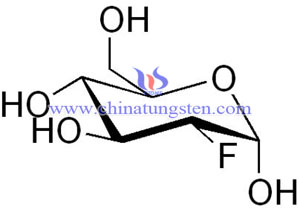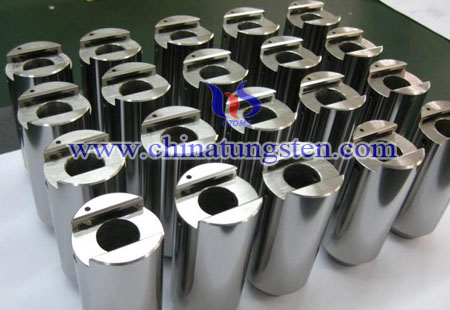Tungsten Alloy FDG Shielding Container
- Details
- Category: Tungsten Information
- Published on Thursday, 31 December 2015 17:44
In recent years, with the advances of imaging techniques, the application of PET also has a rapid development. 18F-fluorodeoxyglucose, namely fluoro-deoxy-glucose (commonly referred to as FDG, its chemical molecular formula as below), as a commonly used positron radiopharmaceutical in medical treatment also has been widely used in PET detection. Since the vast majority of cancer cells have high metabolic characteristics, their split and reproduction speed is faster than the normal cells, so their usage for glucose will increase significantly. Especially for malignant tumor cells, the the glucose consumption in the growth process is much larger than in normal tissues, so that the FDG, which is higher than normal tissue, will gather in the tumor cells. Therefore, patients after injection of FDG can be scanned by PET and form the imaging which can reflect the glucose requirements of tissue in vivo, so as to measure the brain metabolism, determine the myocardial viability and diagnose various malignant tumors. And then PET can more accurately determine the size, amount and existence form of tumors and so on.

FDG plays an critical role in PET detection, but as mentioned earlier, FDG is a radioactive substance, which means that it's radiation will cause harm to humans. Therefore, we must focus on the storage environment and conditions of FDG. The shielding containers that commonly used for storing FDG is mainly made of tungsten alloy materials, which has the high density that can have a high radiation absorbing capability. Therefore, tungsten alloy shielding container can well shield the radioactive FDG,so as to protect the safety of the patients and the doctors.

| Tungsten Gold Plated Supplier: Chinatungsten Online www.tungsten-alloy.com | Tel.: 86 592 5129696; Fax: 86 592 5129797;Email:sales@chinatungsten.com |
| Tungsten News & Prices, 3G Version: http://3g.chinatungsten.com | Molybdenum News & Molybdenum Price: http://news.molybdenum.com.cn |



 sales@chinatungsten.com
sales@chinatungsten.com